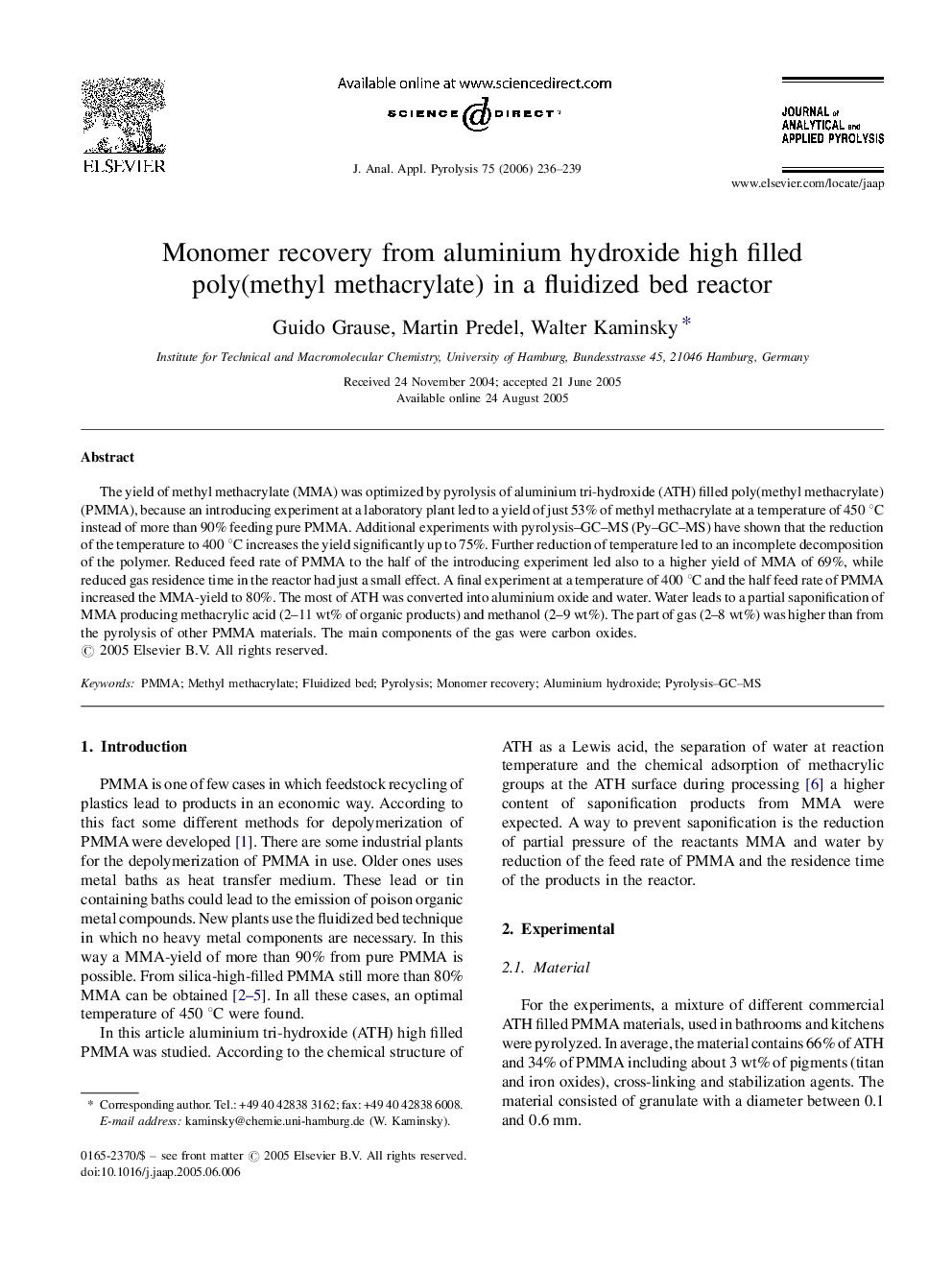| Article ID | Journal | Published Year | Pages | File Type |
|---|---|---|---|---|
| 1198066 | Journal of Analytical and Applied Pyrolysis | 2006 | 4 Pages |
The yield of methyl methacrylate (MMA) was optimized by pyrolysis of aluminium tri-hydroxide (ATH) filled poly(methyl methacrylate) (PMMA), because an introducing experiment at a laboratory plant led to a yield of just 53% of methyl methacrylate at a temperature of 450 °C instead of more than 90% feeding pure PMMA. Additional experiments with pyrolysis–GC–MS (Py–GC–MS) have shown that the reduction of the temperature to 400 °C increases the yield significantly up to 75%. Further reduction of temperature led to an incomplete decomposition of the polymer. Reduced feed rate of PMMA to the half of the introducing experiment led also to a higher yield of MMA of 69%, while reduced gas residence time in the reactor had just a small effect. A final experiment at a temperature of 400 °C and the half feed rate of PMMA increased the MMA-yield to 80%. The most of ATH was converted into aluminium oxide and water. Water leads to a partial saponification of MMA producing methacrylic acid (2–11 wt% of organic products) and methanol (2–9 wt%). The part of gas (2–8 wt%) was higher than from the pyrolysis of other PMMA materials. The main components of the gas were carbon oxides.
